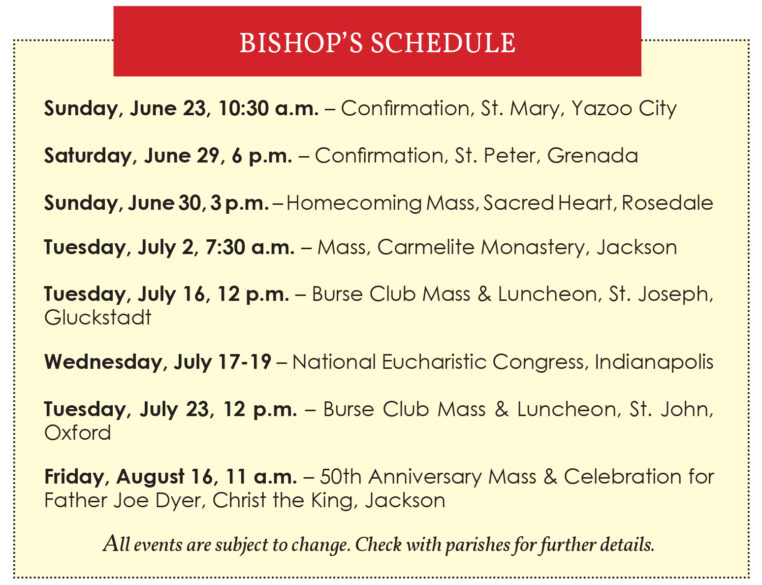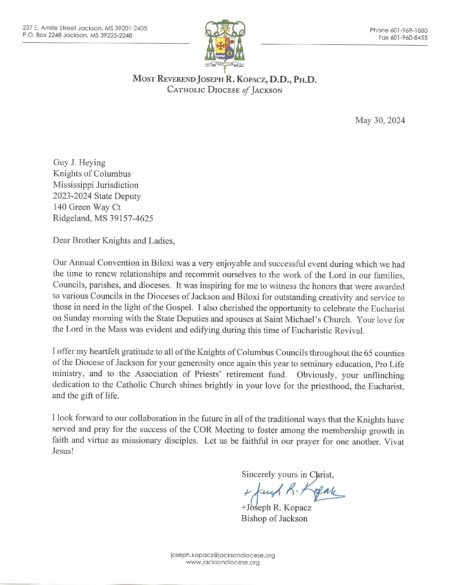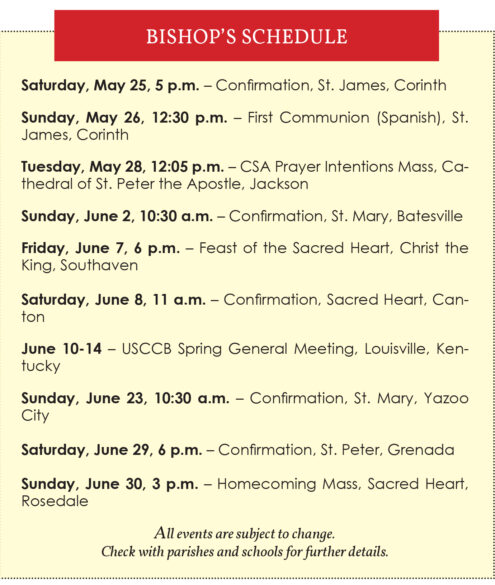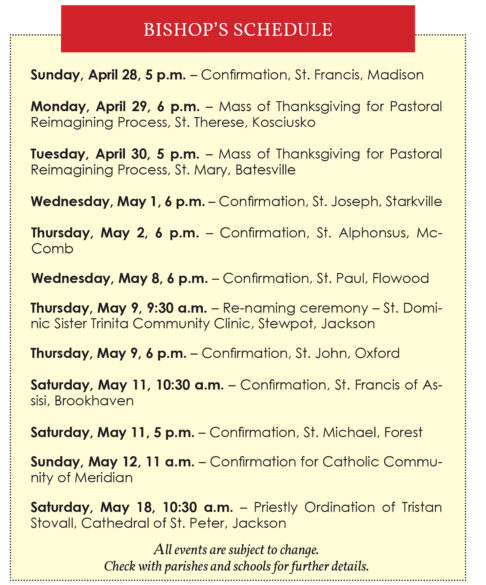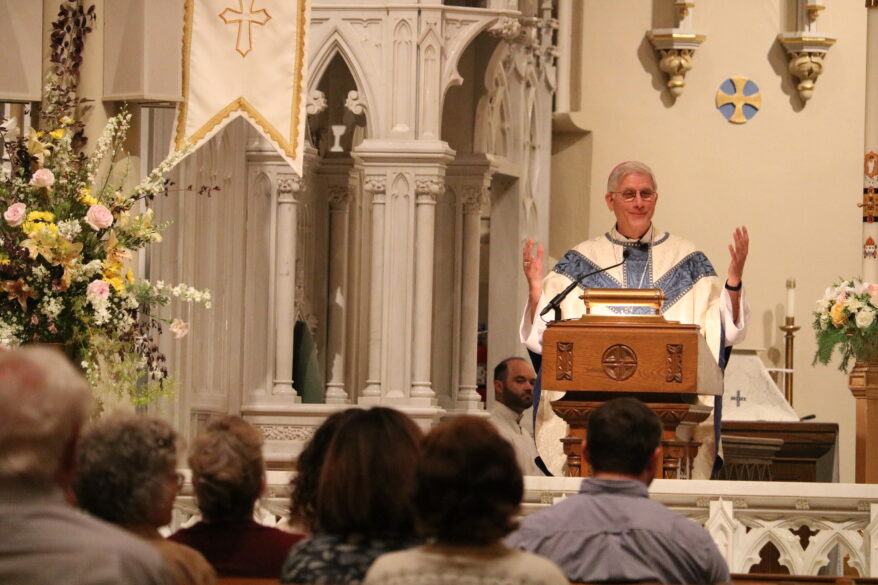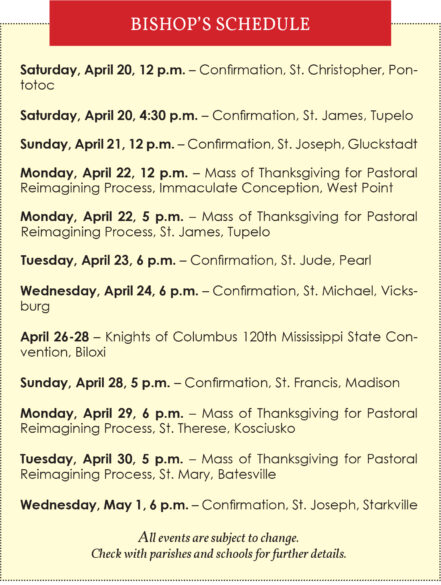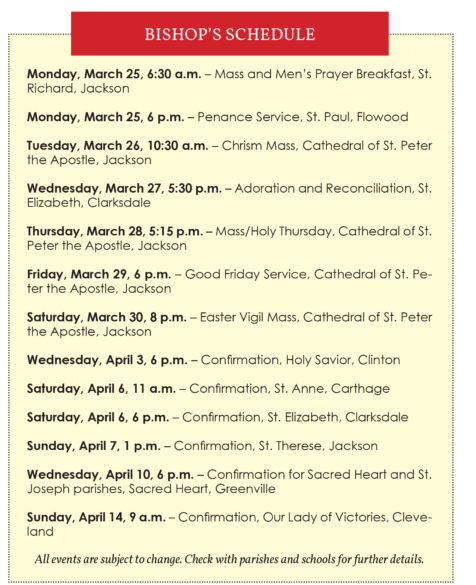Por Obispo Joseph R. Kopacz, D.D.
El Congreso Eucarístico Nacional está en marcha en Indianápolis esta semana y se ha vertido una considerable fe, esperanza y amor en los preparativos que lo han hecho todo posible. Nuestro Señor Eucarístico está obrando grandes maravillas e inspirando a muchos a reconocerlo y amarlo en el don de Su Cuerpo y Sangre durante este tiempo de gracia en la historia católica de nuestra nación.
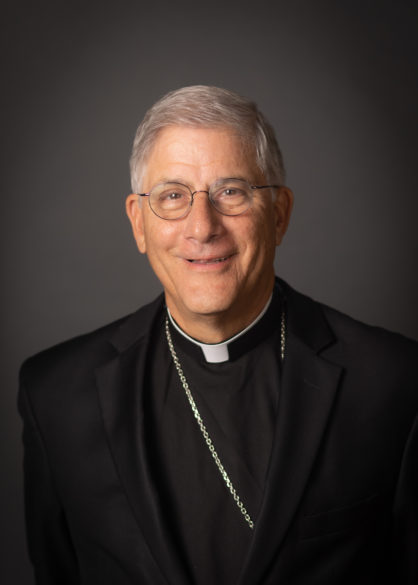
Una manifestación de la efusión de la gracia de Dios fueron las cuatro procesiones eucarísticas nacionales que convergieron a principios de esta semana en Indianápolis. Recordando las palabras de san Pablo, muchos caminaron alegremente como peregrinos en adoración. “Regocíjense siempre en el Señor. Lo diré de nuevo: ¡alégrate! Tu bondad debe ser conocida por todos. El Señor está cerca”. (Filipenses 4:4-5) Es un tiempo de renacimiento renovación y regocijo para conocer el don duradero y eterno que el Señor crucificado y resucitado ha legado a la Iglesia en la Eucaristía.
A medida que disfrutamos de este número de la revista Mississippi Catholic que presenta las celebraciones de los sacramentos de toda la diócesis, es muy evidente que la Misa, la gran oración de Acción de Gracias es el corazón y el alma de nuestra identidad como católicos. Recientemente, en cada sesión de clausura de nuestra Reimaginación Pastoral, la Eucaristía fue la pieza central para expresar nuestra gratitud, así como para invocar al Espíritu Santo para que nos inspire en nuestro compromiso de ser fieles al Señor en la renovacion pastoral. El santo sacrificio de la Misa es nuestro verdadero norte en el camino hacia la vida eterna, el cumplimiento de la promesa que el Señor hizo a todos los discípulos que comieron su cuerpo y bebieron su sangre. “Yo soy el pan vivo que ha bajado del cielo; el que coma de este pan vivirá para siempre; el pan que yo daré es mi carne y lo dare para la vida del mundo”. (Juan 6:51)
La Eucaristía, el centro de la vida de la Iglesia, de alguna manera parece decirlo todo. Lo dice de cien maneras diferentes: esto es lo que somos, y esto es lo que es Dios… Cuando miramos la Eucaristía en toda su rica plenitud, podemos vivir en nosotros el asombro eucarístico y la maravilla ante este gran don que Dios nos ha dado en su Hijo Jesús. (Stephen J. Binz, Eucaristía, página 2) El salmo capta estos dones de asombro y maravilla. “Entren por sus puertas dando gracias, en sus atrios canten su alabanza. Denle gracias y bendigan su nombre, Si el Señor es bueno, su amor dura por siempre, y su fidelidad por todas las edades”. (Salmo 100)
Un elemento central para reconocer la presencia real de Jesús en la Eucaristía es nuestra hambre y sed de la Palabra de Dios. Nuestro mundo católico litúrgico/sacramental no puede existir sin la proclamación de las Escrituras durante cada administración de los sacramentos. Los bautismos o unciones de emergencia serían las excepciones. La historia de Emaús en el Evangelio de San Lucas encarna lo que el Papa Juan Pablo II quiso decir en su documento Ecclesiastico de Eucaristia en el cambio de milenio. En otras palabras, la Iglesia nace de la Eucaristía y del camino.
Emaús representa la plenitud de la fe eucarística cuando la Palabra ardía en el corazón de los discípulos, y reconocían la presencia del Señor resucitado en la fracción del pan. La inspirada Palabra de Dios nos prepara para ver la gloria de Dios en el cuerpo y la sangre del Señor en el altar.
Un elemento central de una celebración auténtica de la Eucaristía es la comprensión de que al final de la Misa el servicio continúa.
“Vete en paz, glorificando al Señor con tu vida”.
“ Demos Gracias a Dios”.
Como el Señor enseñó claramente, es urgente poner en práctica lo que hemos escuchado para construir nuestra casa sobre la roca, el terreno sólido de la fe en acción. Aprovechando el momento con todos los que asisten al Congreso Eucarístico estará la invitación a ser misioneros eucarísticos, o discípulos misioneros encendidos con la alegría del Evangelio. Después de todo, somos el Cuerpo de Cristo, la iglesia, y debemos llevar nuestra santa comunión con el Señor y unos con otros a nuestras vidas y al mundo como una levadura que da testimonio del Reino de Dios.
El Señor está siempre cerca, y aun más cuando los miembros de su cuerpo, la Iglesia, viven fielmente la Buena Nueva.


